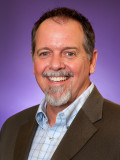Watch a brief video about the Teaching and Learning Conversation on this topic.
All of my (Meredith Curtis) college courses followed the traditional, lecture-based style of instruction, and never having experienced a non-traditional instructional environment centered in active learning and student engagement, I accepted this style of instruction. When I began to teach, I taught as I had been taught, imparting information to students as they passively sat in the classroom. However, my fifteen years of research experience left me questioning the efficacy of this teaching style; the passive nature of lecture-based instruction was so counter to the creativity and spirit of discovery that is central to scientific research. When the opportunity to attend the Summer Institutes on Scientific Teaching arose, I immediately accepted.
The Summer Institutes strive to train faculty in three main areas: active learning, assessment, and inclusive teaching. The overarching goal of the Summer Institutes focuses on changing the current landscape of science classrooms, in which passive instruction and rote memorization have become standard practice, to a classroom based in critical thinking, experimentation, and creativity. Attrition from Science, Technology, Engineering, and Mathematics (STEM) programs is high and often accepted as the norm, with certain courses having gained the reputation as “weed-out” courses. The high attrition from STEM programs calls into question if we are simply selecting for students that thrive in a traditional, lecture-based classroom and inadvertently discriminating against students who learn in a non-traditional classroom environment. To move towards a more inclusive environment that accounts for different learning styles, the Summer Institutes offer strategies on how to integrate active learning into the classroom. Additionally, the Summer Institutes provide guidance on how to incorporate multiple forms of assessment throughout the learning process that allow students to self-assess their understanding in a variety of formats while providing faculty with real-time assessment of their students’ understanding of course material.
During our Teaching and Learning Conversation, we shared how we have incorporated the training we received at the Summer Institutes into our classrooms. Although the Summer Institutes tailor its training for science faculty, faculty in all disciplines will benefit from the strategies we learned at the Summer Institutes. One concept presented at the Summer Institutes that we have both embraced is called “Engaugement” (Dirks, Wenderoth, & Withers, 2014). “Engaugement” intersects active learning with formative assessment (assessment for learning). In this model, the students are actively engaged in constructing their own understanding and are provided immediate feedback on their learning. During our TLC, we provided examples of how we have incorporated active learning into our classroom and how we have integrated multiple forms of assessment into our courses.
In his immunology course, Mike has incorporated longitudinal case studies that allow the students to follow a patient’s history over the semester. The students record their questions in a Google document based on the latest diagnostic results presented in the case study each week. This format allows each group to critically consider the results, creatively develop questions, and explore potential treatment recommendations. Then, the groups can reflect on the questions asked by the other groups in the class during class discussions. Case studies that engage the students in a human narrative are an excellent tool in incorporating active learning into the classroom and providing formative assessment during the process.
During our TLC, we also discussed other active learning activities that provide more engaged learning and opportunities for formative assessment. In addition to the incorporation of class discussions and polling questions into each lecture period, I create in-class problem sets at the end of each major unit to provide students a penalty-free opportunity to assess how well they understand the material before an exam. Giving time during class to work on the problem sets allows me to assess how well my students are understanding the material. It often becomes apparent that certain concepts have not been fully understood, and I can provide an immediate explanation to help clarify the concept as the students are working their problem sets.
Another major change that I have made since returning from the Scientific Institutes is implementing a backward design approach to outline my course learning goals and objectives—the “what do I want my students to know and what should they be able to do?” Following the Summer Institutes, I began to provide my students with a framework for each unit that outlines the unit learning goals and objectives. The response from students has been extremely positive. The students now know exactly what they need to be able to do, providing them a study guide as they navigate through their lecture notes and textbooks. The framework also serves as a guide as I design learning activities for class and as I write exams, ensuring that I do not create activities or exam questions that fall outside of the scope of the learning goals and objectives. One last major take-away from the Summer Institutes was ensuring that my summative assessment (assessment of learning, e.g. exams) aligns with my learning goals and objectives and that my formative assessment matches the same difficulty level as the summative assessment.
Transitioning from a traditional, lecture-based style of instruction to a more learner-centered classroom does not have to happen overnight. Small integrations of active learning activities and opportunities for formative assessment will gradually move your classroom to one where students are driving their own learning and understanding.
References
Dirks, C., Wenderoth, M. P., & Withers, M. (2014). Assessment in the college science classroom. W.H. Freeman and Company.
Handelsman, J., Miller, S., Pfund, C. (2007). Scientific teaching. W.H. Freeman and Company.

 This article was written by Mike Chumley, Associate Professor and Department Chair of Biology, and Meredith Curtis, Instructor I of Biology, for the Fall 2019 Issue of Insights.
This article was written by Mike Chumley, Associate Professor and Department Chair of Biology, and Meredith Curtis, Instructor I of Biology, for the Fall 2019 Issue of Insights.